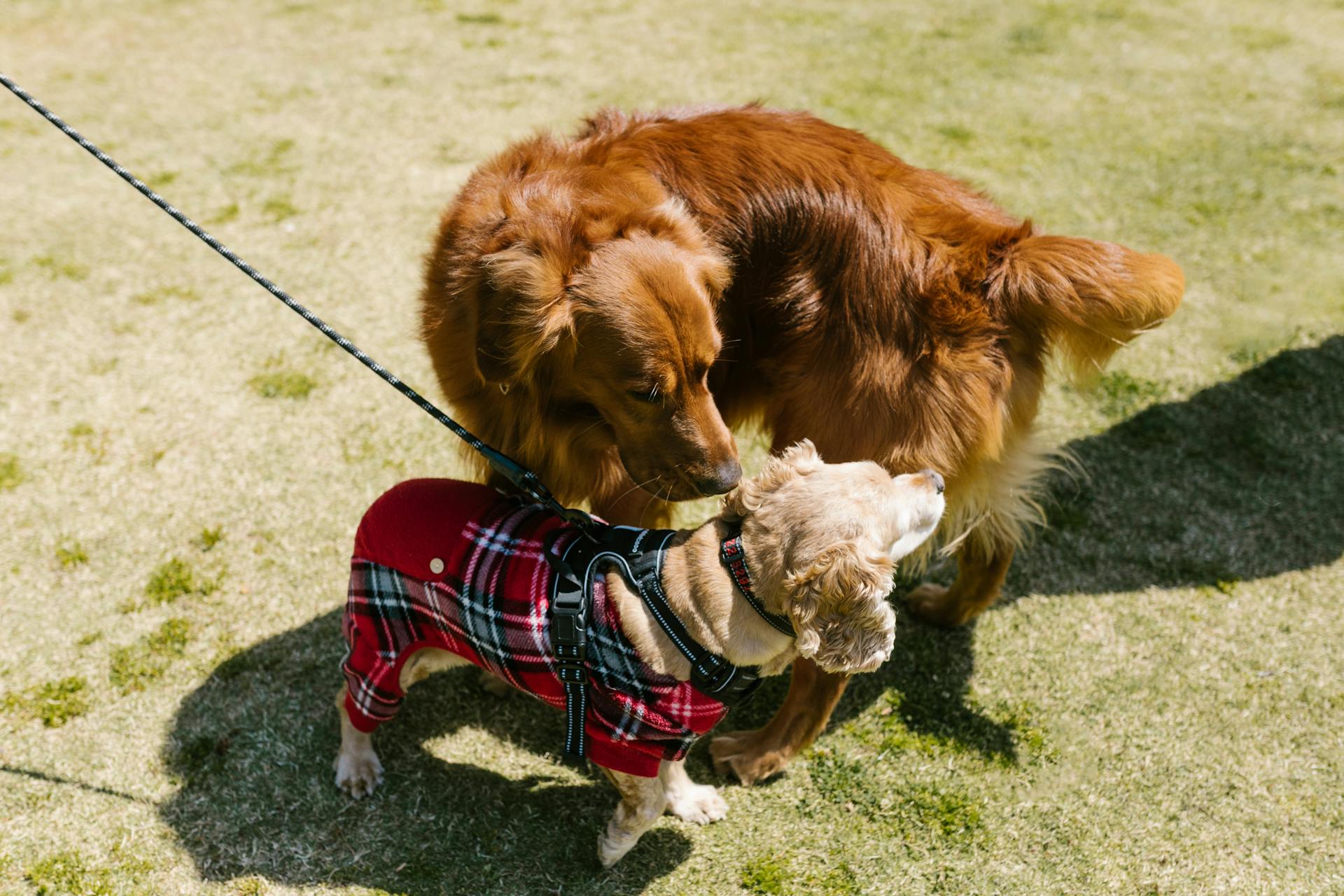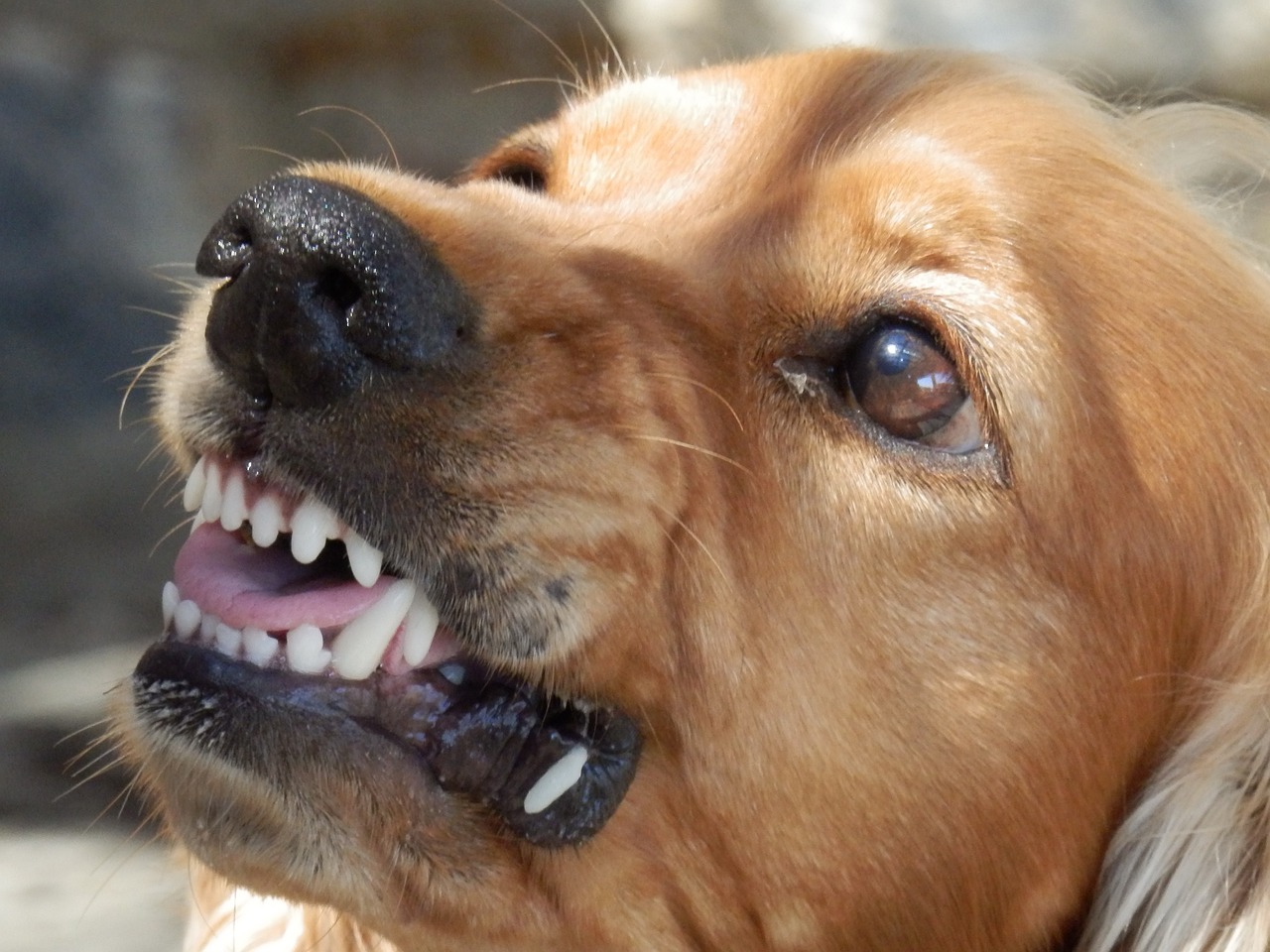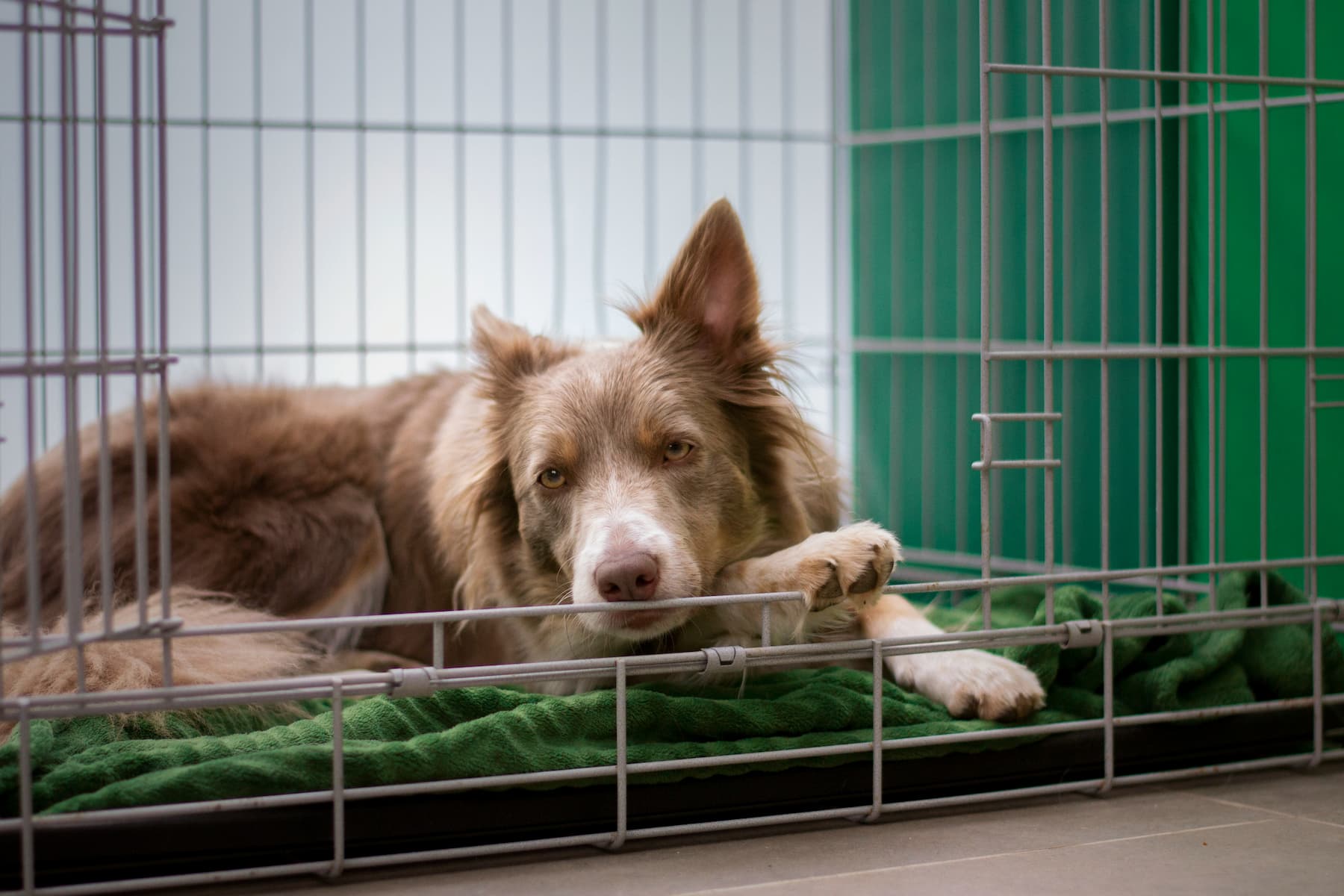“My dog attacks my other dog on walks, and lately this behavior is starting to get out of hand. This new issue has surfaced since we got our second dog.
Although I am glad my dog now has a new playmate, he’s getting overstimulated more often. I notice that he’s still hyper even after an hour-long walk or even two in the same day.
I’ve been implementing training sessions and brain games in hopes of tiring him out. I was hoping to reduce his need for physical exercise, but on walks, he still wants to go farther.
The Triggering Event
My dog attacks my other dog on walks, when he notices our walk is cut short or we go in a different direction. It’s as if he’s venting his frustration on my other dog. He’ll clamp onto her neck and will try to drag her around. In the meanwhile, the leashes get all tangled into a mess.
I don’t think he’s trying to hurt her, it seems almost playful in nature, but of course, it’s irritating. When my dog attacks my other dog on walks, it’s difficult to separate them. They won’t listen to me and I have to spend several minutes untangling the two leashes.
Some Early Hints of the Behavior
Now that I think about it, in retrospect, some hints of this behavior surfaced prior to getting the second dog. On walks, when he wanted to be off-leash, he would start playing “tug-of-war” with the leash for a minute or so.
He would keep doing so until he would understand I wasn’t going to give in. Eventually, with more walks, he stopped doing this behavior. But now, with this new dog, the behavior has made a come-back and it’s escalating.
I am not sure how to handle this or prevent this. Is there anything I can do to prevent my dog from attacking my other dog on walks when he gets so frustrated? I am his fourth owner, so maybe this is why he has been relinquished to the shelter so many times. Thank you!” Susie
A Potential Case of Redirected “Frustration”
Hi Susie, I am sorry to hear that your dog has started attacking your other dog on walks. Your new dog seems to have a lot of energy. His behavior suggests that he may not be reaching a point of calm after physical exercise. Overstimulation can manifest as rough play, frustration, and heightened arousal.
Although a diagnosis can only be made through a careful in-person analysis, this sounds like a case of redirected frustration. Let’s call this redirected “frustration” rather than redirected aggression for now as we can’t assume there is aggression at play here (yet). However, there are risks that this behavior may escalate and lead to injuries.
Generally, the more aroused and frustrated the dog, the more likely he’ll redirect to neutral targets nearby, such as a dog or person quietly minding their own business.
The Importance of Early Intervention
As with other behavior problems in dogs, the more your dog gets to practice the behavior, the more habit-forming it becomes.
Early intervention is important. At some point, your frustrated dog may come to associate your other dog with the feelings of frustration. He may start using your other dog as his “punch pillow” more and more in the face of any arousing contexts. We want to avoid this.
Left untreated, the behavior risks generalizing to other frustration-inducing events such as barking at something he can’t reach or being unable to chase a cat.
Some Extra Challenges
The behavior you describe is challenging to work on because it’s already difficult to work on frustration-induced behaviors when walking one dog. With two dogs, you have the extra challenge of leashes tangling, and on top of that, the risks of a redirected bite.
Redirected bites are not uncommon when two dogs are fighting or simply roughhousing. As we try to grasp a collar or try to physically separate the dogs, dogs may react instinctively by biting due to their highly aroused state.
What To Do If My Dog Attacks My Other Dog on Walks?
If your dog is attacking your other dog on walks, you want to intervene early. As mentioned, practice makes perfect. Early intervention can help prevent the behavior from taking roots and establishing. Because this behavior appears to stem from frustration, addressing this emotion is part of the equation. Following are general tips.
Teach Frustration Tolerance
Your dog needs to learn how to cope with his feelings of frustration. He also benefits from learning better impulse control. You may find it helpful to implement various impulse control “games” in his daily routine. Things like having your dog sit in front of the door before it’s opened, sitting before you toss him a ball, and sitting before you lower the food bowl or give him attention.
Add Mental Work into Walks
Adding some mental work to walks can help keep your dog focused and engaged. For example, you can mix and match cues such as sit, heel, down, and hand target.
Give Your Dog a “Job“
Using tools like a backpack for dogs with light weights (ask your vet first if this is OK based on his health and age) can help give him a “job” and tire him out more efficiently.
You can also supplement walks with other activities such as hiking or pulling activities such as carting or bikejoring. These activities may give your dog the opportunity to release excess energy in a productive way.
Provide Enrichment
Continue offering enrichment with puzzle feeders and don’t forget to put your dog’s nose to work. Nosework and sniffing games can be particularly tiring activities for dogs.
Supervise Play
Prevent play from causing too much overstimulation. Set up short supervised play sessions, ending them before things get too rough. Offer calm activities such as chewing on something to help tone down all the active energy.
Better Control on Walks
Try using a front-attaching harness for more control during walks or a head halter (a conditioning period is required for this latter).
Prevent the Behavior
When you reach a certain area where you may predict the behavior of biting on the leash, try your best to preempt it. You can do so by tossing high-value treats for him to catch on the ground, one after another. Keep intermittently tossing treats until you get home.
Once home, provide access to some activity he really loves doing. For example, you can play a fun game of hide-and-seek, let him chase a flirt pole, or organize a treasure hunt. This should help prevent him from associating going home with all the fun ending.

The Importance of Separate Walks
Separate walks may be needed initially so that you can work on your dog’s impulse control and leash manners. This is crucial if we want to prevent your dog from reaching a frustrated state.
Separate walks also ensure that your other dog has a positive walking experience without being subjected to your other dog’s frustration.
Caution is needed though. If precautions are not taken, your dog may go back to redirecting his frustration with the leash. Furthermore, your dog may perceive you as a new target if he’s frustrated enough.
You may want to enlist the help of a dog trainer/dog behavior professional. He or she can help you work on foundation exercises, ensure correct timing, and help you recognize early body cues of the beginning of overstimulation/frustration.
Integrating the Walks Together
Once your dog no longer shows signs of frustration, and is better under control, you can gradually add short walks with your other dog in low distraction areas.
It is best to walk your dogs with two handlers (one handler per dog). This can help you test the waters to determine whether the problem behavior risks resurfacing. If that’s the case, you will need to make some adjustments to the plan.
For example, you may need to work more gradually in the integration process and train more until you obtain a more reliable response.
Concluding Thoughts
I hope this helps! To fix behavior problems in dogs, you’ll often need a multi-pronged approach. The problem you have presented here is not an easy-to-address behavior.
Redirected frustration, like other behavior problems, requires a multi-faceted approach so as to address overstimulation and increase your dog’s frustration tolerance.
Please enlist the help of a professional for safety and the correct implementation of behavior modification. If you need further tips for training, reach out to Ask a Trainer, and we will match your question with one of our experts best suited for your needs!




